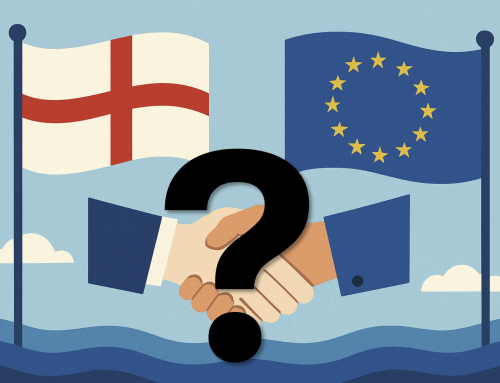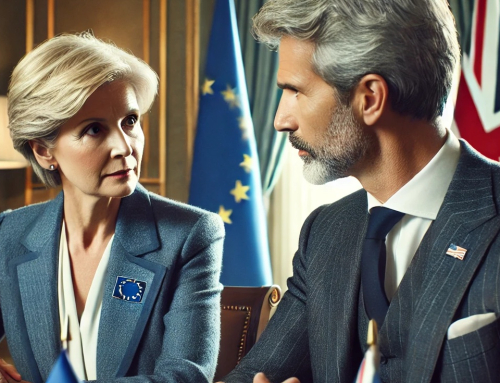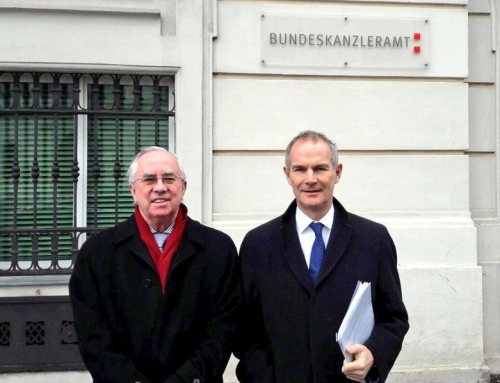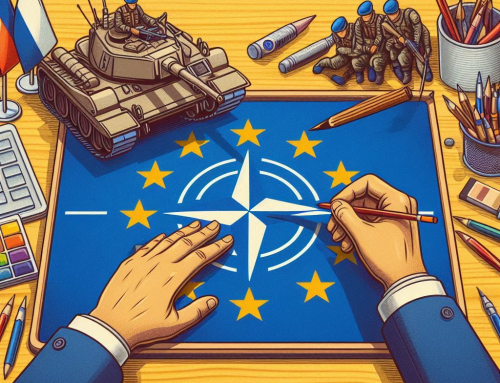
UK-EU RELATIONS AFTER BREXIT – WHICH ARRANGEMENTS ARE POSSIBLE?
(This paper is partially based on a presentation to the Swedish Network for Research in EU law by Sven Nordberg)
Following the referendum held on 23 June 2016 in the United Kingdom (UK), whereby around 52 % of the votes were in favour of the UK leaving the European Union (EU) the UK Government on 29 March 2017 in a letter from the Prime Minister, Ms. Theresa May to the President of the European Council with reference to Article 50 of the Lisbon Treaty announced its intention to withdraw from the EU. The purpose of this article is from an EU law point of view to look at and a bit closer examine what possible arrangements for a future UK-EU relationship that are possible in the light of earlier precedents. In this examination will be recalled the particular character of the EU as a Union of law, where the guarantees for legal certainty and non-discrimination are particularly strong not only for the EU Member States buts also for their nationals. It is recalled that overcoming the risk of a legal imbalance arising between the EU and the EFTA States in the European Economic Area (EEA) became a major objective for the EEA negotiations 25 years ago.
As a point of departure is taken Ms. May’s Lancaster House speech on 17 January 2017 and the twelve principles outlined there. These were then central in the Government White Paper “The United Kingdom’s exit from and new partnership with the European Union” published on 2 February 2017.
The UK Government position
Of the twelve guiding principles set out both in the Lancaster House speech by Ms. May and in the Government’s White Paper, there are in particular five that must be considered decisive for what kind of arrangements with the EU that may be possible. Those principles, which also will be addressed in the following, are:
- Providing certainty and clarity (Great Repeal Bill ),
- Taking control of our own laws (No role for CJEU ),
- Controlling immigration of EU nationals to UK ,
- Ensuring free trade with European markets (),
- Delivering a smooth, orderly exit from the EU .
Since the formal negotiations between the EU-27 and the UK Government started on 19 June 2017 nothing has happened, that would give reason to believe that any fundamental changes in the UK position are considered. Media reports have, however, indicated that there may be rather differing views within the Cabinet as to what has been labelled a “soft” or a “hard” Brexit. This has constantly been denied by representatives of the Prime Minister. It would furthermore seem that most of such discussions do not refer so much to the final agreement to be negotiated between the EU and the UK but rather to transitional arrangements for a period immediately after 29 March 2019, when Brexit is supposed to become a reality in accordance with Article 50 TEU.
WHERE DO THE PRINCIPLES OF MS. MAY LEAD IN THE LIGHT OF THIS?
Before examining the most critical of Ms. May principles, it would seem appropriate here to recall, that from the EU side two overruling principles would seem to be decisive for the future EU – UK relationship, the correct balance between rights and obligations and the proportionality. Apart from this implying that “no cherry-picking” will be allowed, it also means that a third country cannot enjoy similar rights as a Member State.
With reference to what was said in the beginning regarding the five of the twelve of Ms. May’s principles, which must be seen as conclusive for what arrangements that may be possible after Brexit, each of the five will here be briefly commented upon
The Repeal Bill
On 21 June 2017 the Repeal Bill was announced in the Queen’s speech to the new Parliament and it was published on 13 July 2017 under its official title of the European Union (Withdrawal) Bill. The main idea of this bill is to repeal the 1972 EC Act, which provides legal authority for EU law to have effect as national law in the UK, and to transform all acts of EU law – as they stand at the moment before leaving – into UK law. This will then be subject to the exclusive interpretation by UK courts. As said in the White Paper the supremacy of EU law over UK law will be ended.
EU case law before withdrawal also becomes part of UK law – but the bill allows the Supreme Court (and in some cases the High Court) to overturn earlier judgments – but expects that to be done “sparingly”. The bill also gives the courts guidance on how to make decisions in future cases on “EU derived law”.
In its bill the Government has further said that the courts are not bound by future rulings of the CJEU but may take them into account, if they consider it to be appropriate. This lead the President of the UK Supreme Court Lord Neuberger recently in an interview in BBC Radio 4 to request that the parliament must give judges clear statutory guidance on what they should do about ECJ judgments after Brexit – or be prepared to defend them against accusations of political interference.
Although this new UK law thus “should be interpreted as at present” it would seem very clear that the absence of direct influence from future developments of EU case law through the CJEU quite soon may risk to open up a gradually but constantly widening gap between the interpretation of this UK law and corresponding EU law. In addition, it must be recalled that the UK for years has had a disproportionately large impact upon the development of the CJEU case law. This has not only been due to the many excellent UK members of the EU courts, but in particular to the great number of references to the CJEU from UK Courts and to the particular loyalty UK Courts have demonstrated over the years in applying EU law, a legal order that seems to have been particularly suitable to common law lawyers.
Taking control of our own laws
The pronouncement that there should no more role for the CJEU in the UK legal order has to be seen together with the extremely low ambitions
demonstrated in the White Paper’s choice of examples for possible dispute settlement mechanisms. None of these go beyond dispute settlement
through arbitration mechanisms, all of which are accessible only for Contracting Parties but not for individuals or economic operators. If this remains the position of the UK, it must be concluded, that after 46 years of primacy, direct applicability and direct effect of EU law in the UK to the benefit of individuals and economic operators all this will come to an end after 29 March 2019. It is recalled that the UK has a dualistic tradition as to how international agreements are dealt with in national law.
Against the background of what has been said above about the EEA and the EU-Swiss relations, it must be concluded that if this principle is maintained there will not be scope for any more ambitious arrangement with the EU.
Controlling EU immigration
The insistence on such a principle implies that there would neither be scope for any free movement of persons under the principles of EU law. Thereby also any ambitions to remain in the EU Single Market are excluded.
Ensuring free trade with European markets
From what has been seen above, it may be concluded that apart from the EEA there is no precedence for a more ambitious and comprehensive FTA for trade in goods and services. Without institutions with strong surveillance and judicial competences there might only be scope for a simple basic FTA for trade in goods like the 1972 one with Switzerland. This is said with reservation for the possibility that the EU could consider the 45 year old Swiss FTA insufficient as a model for a trade agreement with such an important party as the UK, where the volume of trade by far outsizes that with Switzerland.
In its first presentation regarding how it envisages a future customs arrangement with the EU1 the UK Government sketches out two possible customs-related scenarios, the first one “A highly streamlined customs arrangement between the UK and the EU” 2 and the second one “A new customs partnership with the EU, aligning our approach to the customs border in a way that removes the need for a UK-EU customs border.”3 Without going into any details here, the second option would seem to amount to a sui generis new agreement allowing the UK to operate differential tariff regimes, something that certainly would meet great difficulties from a legal point of view.
A smooth and orderly exit from the EU
The formal negotiations on the British exit from the EU only began on 19 June 2017. So far, one is still at a very initial phase and it may not be expected that more detailed conclusions regarding the exit and the future relationship will be arrived at very soon. As the EU negotiator Michel Barnier, however, repeatedly has underlined, “the clock ticks” towards the 29 March 2019, the two year date after the triggering of Article 50. It is obvious that the time remaining is extremely short, especially taking into account the time needed for ratifications at EU a national level. It is in this context worthwhile to recall that, if there would be a longer or shorter transitional period providing for the continued application during that time of certain parts of the present EU rules, EU law and the EU institutional control will continue to apply thereunder. This would seem to be the reason why recently the imaginative but not very realistic idea was launched, for a time-limited period after the UK has left the EU, to have a continued close association with the EU Customs Union involving “a new and time-limited customs union”4 between the UK and the EU Customs Union based on a shared external tariff and without customs processes and duties between the UK and the EU.“
From the above, a first conclusion would concern the specific and unique character of the EU. In its Opinion 1/91 the ECJ recalled: “The EEC Treaty, albeit concluded in the form of an international agreement, none the less constitutes the constitutional charter of a Community based upon the rule of law. The Community treaties established a new legal order for the benefits of which States have limited their sovereign rights, in ever wider fields and the subjects of which comprise not only Member Sates but also their nationals”.
Today the EU Internal Market, 25 years after the completion of the Delors Commission’s White Paper program5, has become both comprehensive and complex in a way that is without precedent. The areas of the four freedoms are now so interdependent that apart from a full EU Membership there is very little choice for anyone that would want to access and secure equal treatment and non-discrimination in the Single Market. So far this has only been possible through the EEA, which is the only Agreement that provides the necessary institutional mechanisms.
Through the legal strength of EU law and the very strong EU institutions all EU citizens and economic operators are guaranteed equal treatment and non-discrimination in the Single Market and in the whole of the EEA. It would have been natural to expect, that it would be a priority for the UK Government also to want guarantees for this considerable and most valuable achievement to continue for UK nationals even after an exit from the EU. The UK Government has, however, in its insistence on UK sovereignty, independence and “taking back control”, hardly at all addressed this aspect. It would instead seem that the Government is under the impression, that, as long as previous EU acquis is transformed into national UK law, there would be equivalence between EU and UK laws and thus not much to worry about6. It does not seem that the UK Government has given much attention to what the EU from a constitutional law point of view must require before it can accept to negotiate a deep and special partnership with the EU.
One very general but fundamental experience from preparing international negotiations is that a party, that only focusses on its own priorities and “red lines” without giving any consideration to what priorities and “red lines” the opposite side might have, will be up for unpleasant surprises. In this context to ignore fundamental constitutional requirements may even be fatal. It is thus most surprising and almost shocking, that a Government of a Member State that extremely actively has participated during soon 45 years in the development of the EU, so far in its position papers almost has ignored to what extent the EU is a Union of law with very strict limits to what it can and what it cannot agree to without running the risk that a deal concluded is found incompatible with the EU Treaties and thus annulled by the CJEU. This is all the more astounding, since in the UK and in its large public administration there was never any shortage of experts extremely well qualified in the field of EU law and the constitutional aspects thereof.
Out of all the different arrangements presented above there is only one, the EEA Agreement, which would provide access to and participation in the EU Internal Market on equal and non-discriminatory conditions. The Swiss example, that may be the one that comes closest to the EEA, is still lacking guarantees for legal certainty and non-discrimination. That is also the reason why the EU has put a break on further developments with Switzerland. To overcome this, supranational institutions like the ESA and the EFTA Court, which have been decisive for the soon 24 years of success of the EEA, would be needed.
Having from an EU law point of view examined the most relevant arrangements negotiated by the EU during the last 45 years, the overall conclusion as to the answer to the question of which arrangements that may be possible for the UK-EU relations after BREXIT is, that there exists one model, the EEA, that – with its strengths and weaknesses – could provide a possibility for a full participation in the Single Market. As seen by the Swiss case, even a more limited ambition as to the scope of participation therein would, however, require substantial institutions and reciprocal guarantees for equal treatment and non-discrimination, without which the infamous legal imbalance would manifest itself.
*************





